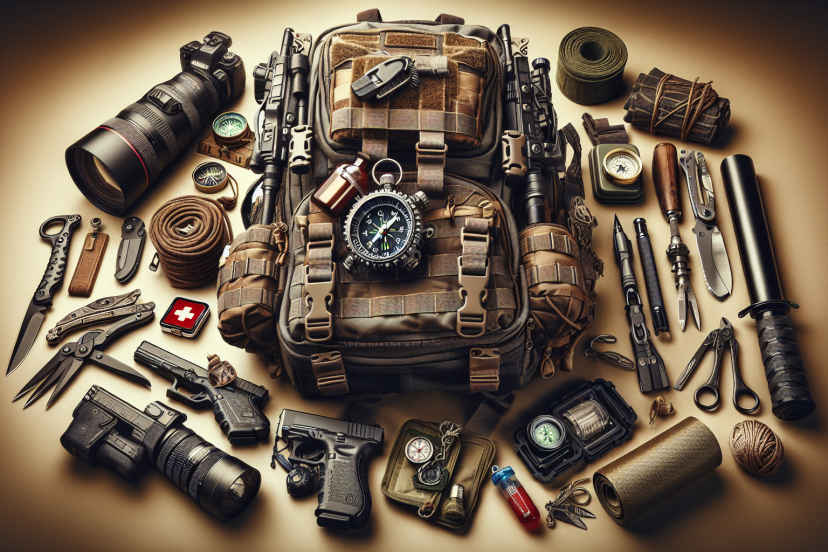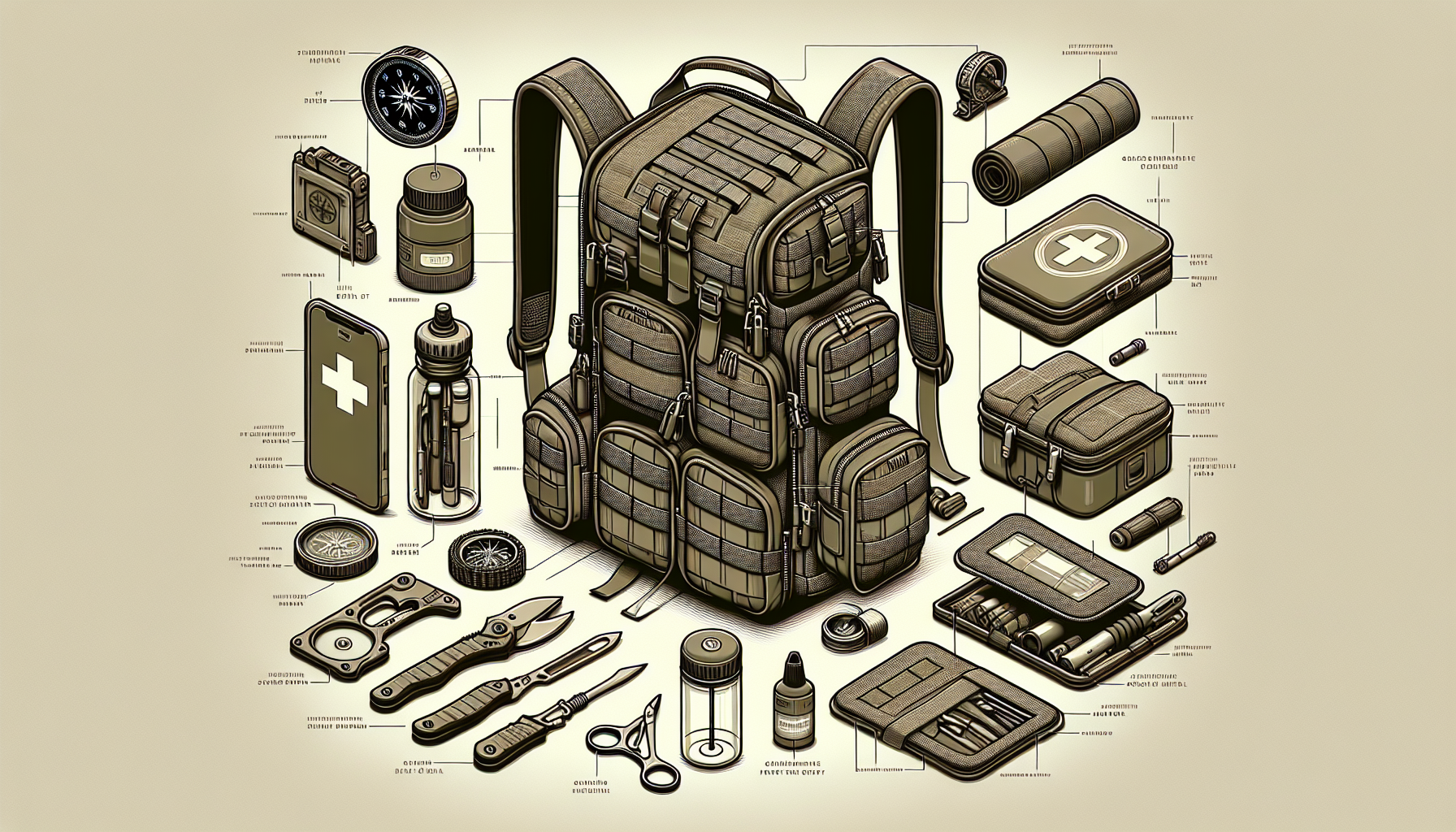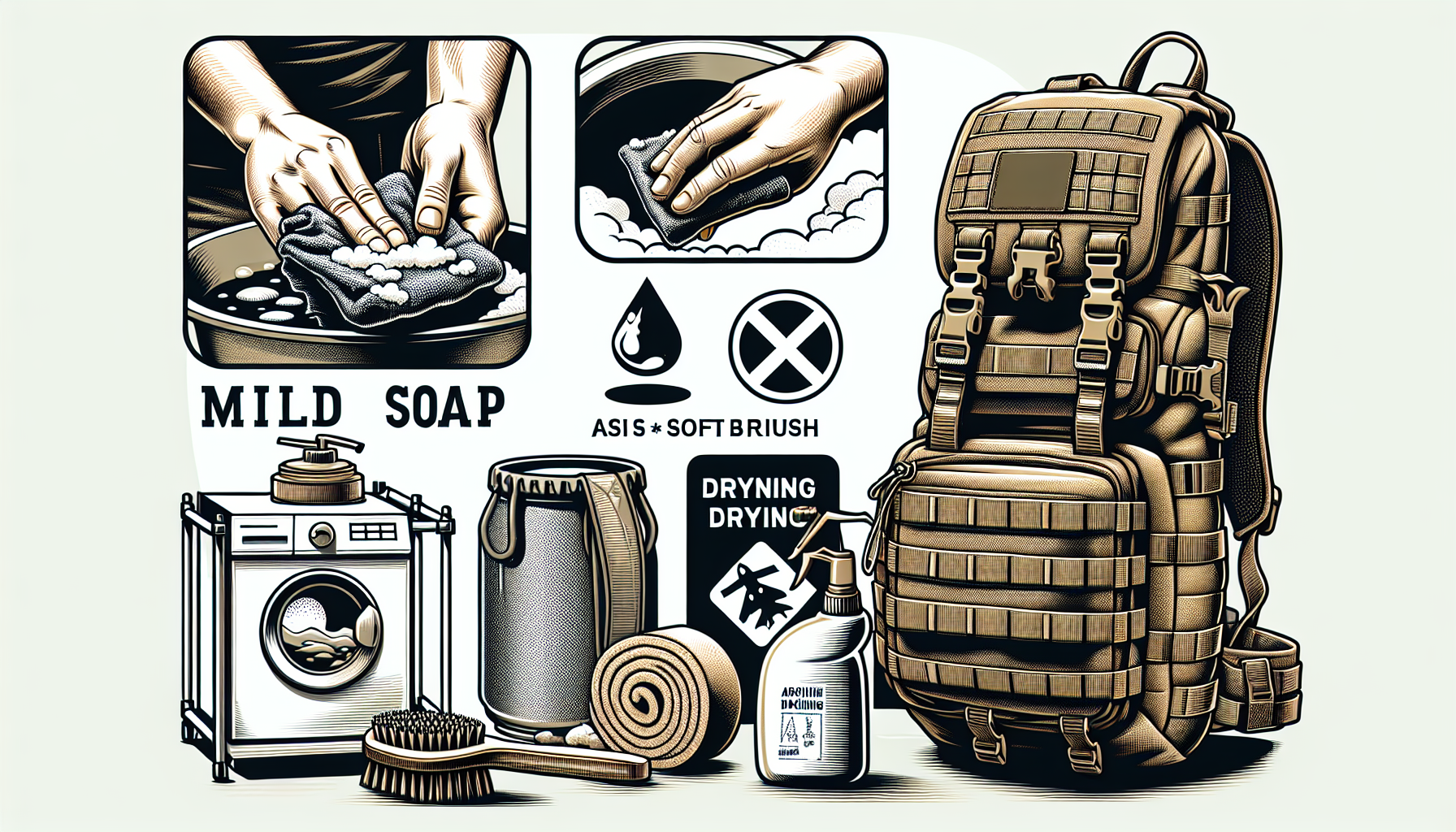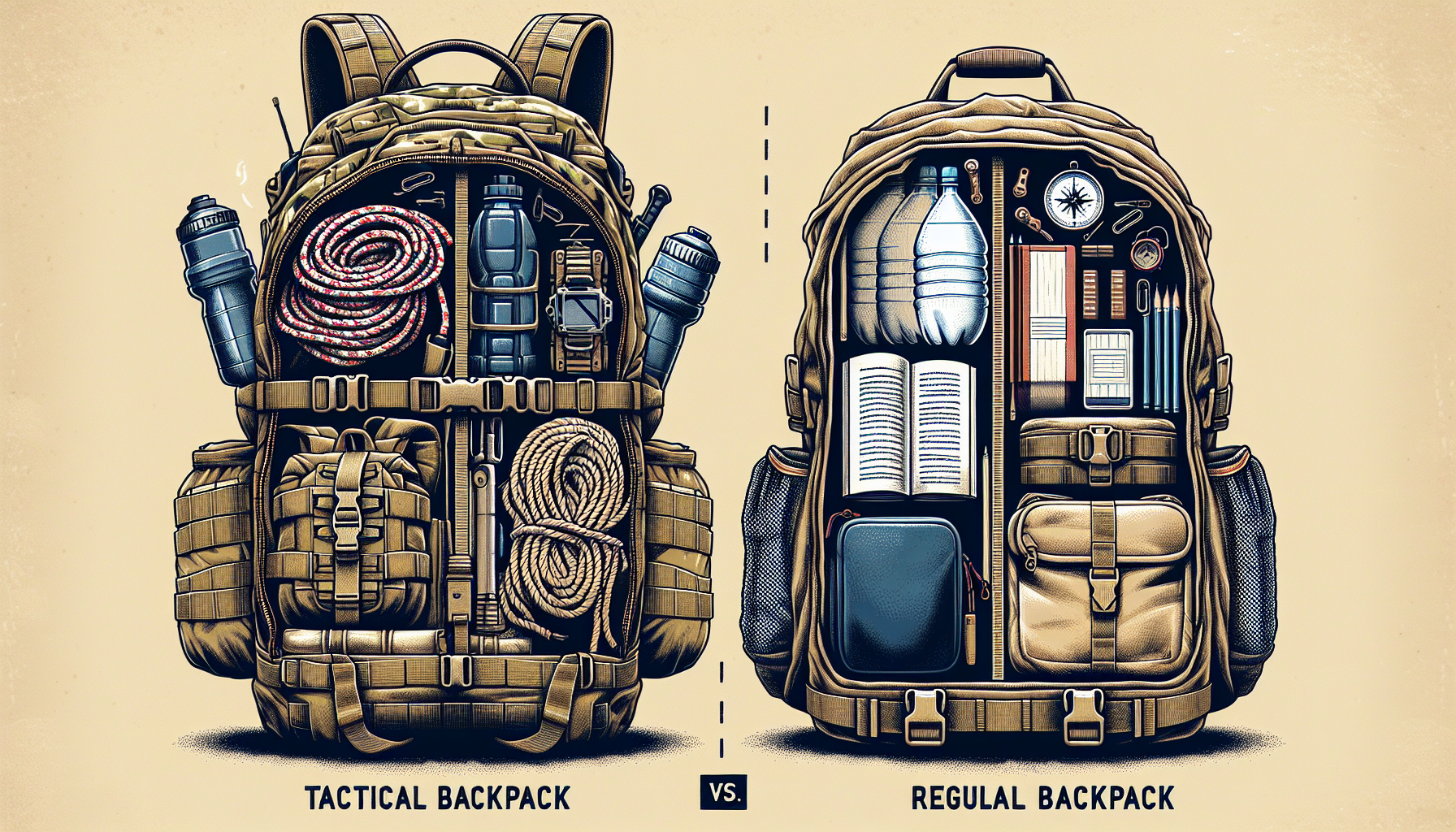How To Pack Your Tactical Backpack For A 3-Day Survival Trip
How To Pack Your Tactical Backpack For A 3-Day Survival Trip
So, you’ve decided to embark on a thrilling 3-day survival trip, and now it’s time to tackle the task of packing your tactical backpack. Whether you’re a seasoned adventurer or new to the outdoor world, packing efficiently and effectively is key to ensuring a successful trip. In this article, we’ll guide you through the process of packing your tactical backpack with all the essentials you’ll need to face any challenges that come your way. From choosing the right gear to organizing it all, we’ve got you covered. Let’s get started!
How To Pack Your Tactical Backpack For A 3-Day Survival Trip
Choosing the Right Backpack
When it comes to embarking on a 3-day survival trip, choosing the right backpack is of utmost importance. You’ll need a backpack that can withstand the rugged outdoors and comfortably carry all your essential items. One key consideration is the capacity of the backpack. You’ll want a backpack that is spacious enough to hold all your gear, but not so large that it becomes cumbersome to carry. A capacity between 30-50 liters is generally sufficient for a 3-day trip.
Durability and comfort are also essential factors to consider. Opt for a backpack made from high-quality materials, such as nylon or Cordura, that can withstand rough terrain and adverse weather conditions. Look for reinforced stitching and sturdy zippers to ensure the longevity of your backpack. Additionally, prioritize comfort by choosing a backpack with padded shoulder straps and a supportive back panel. This will help distribute the weight of your gear evenly and prevent discomfort during your journey.
Lastly, it’s crucial to look for a backpack with multiple compartments. This will allow you to organize and separate your belongings, making it easier to access what you need when you need it. Look for a backpack with side pockets, front pockets, and internal compartments to keep your gear organized and readily accessible.
Organizing Essentials
Before setting off on your survival trip, it’s essential to ensure you have all the necessary essentials packed and organized in your backpack. A well-organized backpack will not only make it easier to find what you need but also help you stay prepared for any situation that may arise.
First and foremost, pack a first aid kit. Accidents can happen, and having a well-stocked first aid kit can be a lifesaver. Include items such as bandages, antiseptic wipes, pain relievers, and any personal medications you may require. It’s always better to be safe than sorry when it comes to your health.
In addition to the first aid kit, bring a compass and map. These navigation tools are invaluable when venturing into unfamiliar territory. Make sure you know how to use them before your trip, as they can guide you back on track if you lose your way.
Another essential item to include is a multi-tool. A multi-tool can serve multiple purposes, such as cutting rope, opening cans, or fixing gear. Its versatility makes it a valuable asset in any survival situation. Invest in a high-quality multi-tool that is durable and reliable.
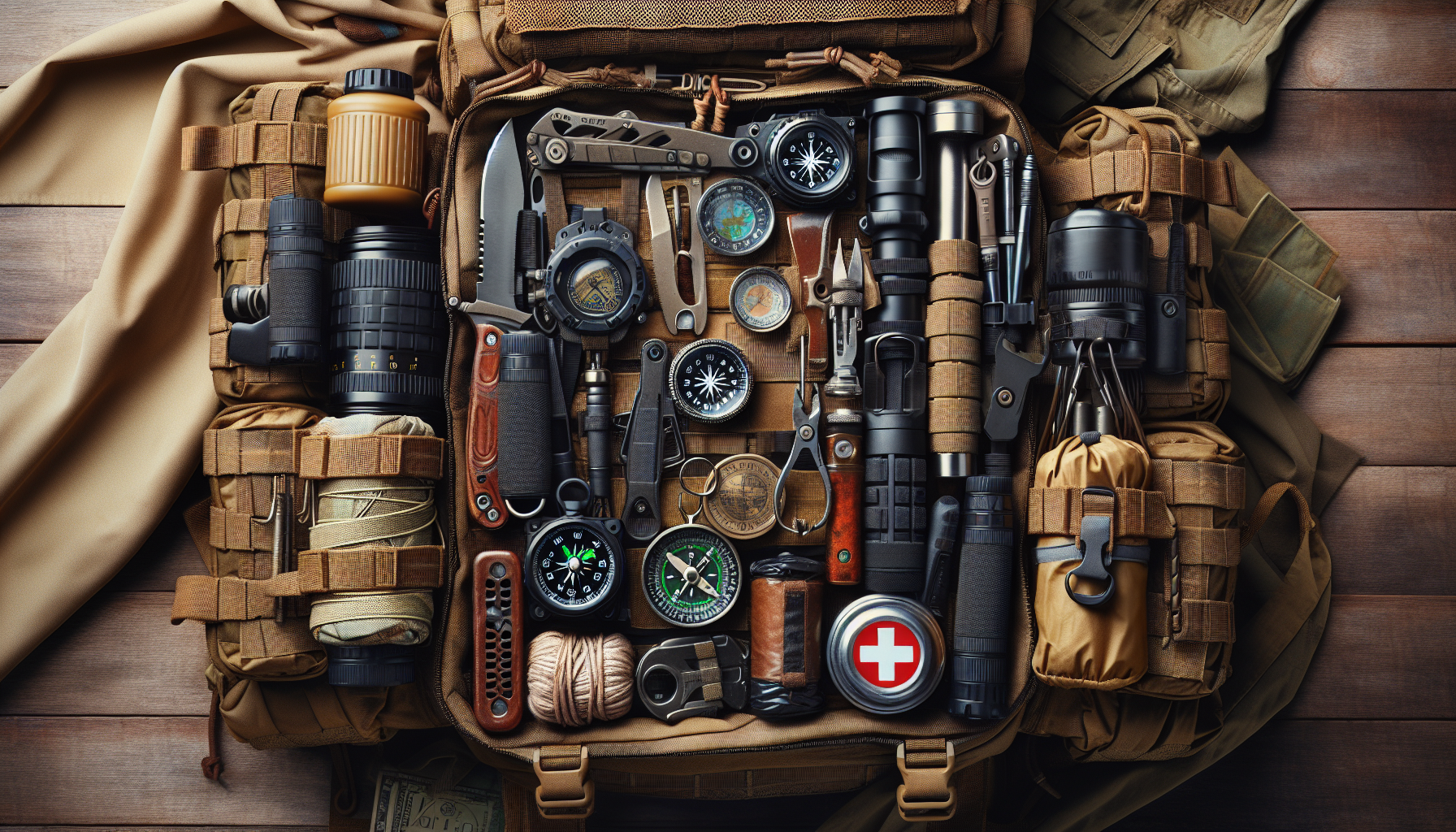
Food and Water Supply
Proper nutrition and hydration are crucial for sustaining energy and endurance during a survival trip. When packing food, prioritize lightweight and easy-to-prepare meals. Consider options such as dehydrated meals, energy bars, and trail mix. These types of meals provide essential nutrients without adding unnecessary weight to your backpack. Remember to pack enough food to sustain yourself for the duration of your trip, and consider any dietary restrictions or allergies.
Carrying a water supply is equally important. While it may not be feasible to carry large quantities of water, you can pack water purification tablets or a filter. These items allow you to drink water from natural sources such as streams or lakes, reducing the amount of water you need to carry. It’s crucial to prioritize water safety and cleanliness to avoid dehydration and waterborne illnesses.
In addition to meals and water, bring energy snacks for quick bursts of energy throughout the day. Granola bars, nuts, and dried fruits provide a convenient and easily accessible boost when needed. These snacks can help keep you fueled and focused during your journey.
Clothing and Shelter
Proper clothing and shelter are essential for protecting yourself from the elements during a survival trip. Start by packing weather-appropriate clothing. Layering is key, as it allows you to adjust your clothing according to changing weather conditions. Pack lightweight, moisture-wicking shirts, pants, and socks that provide insulation and flexibility. Don’t forget to include a hat, gloves, and a waterproof jacket to protect yourself from rain or wind.
When it comes to shelter, consider packing a waterproof tent or tarp. These options provide protection from the rain and other harsh weather conditions, ensuring a comfortable and dry place to rest. Additionally, bring a sleeping bag or hammock that is appropriate for the expected temperatures. A good night’s sleep is vital for maintaining your energy levels and overall well-being during your survival trip.
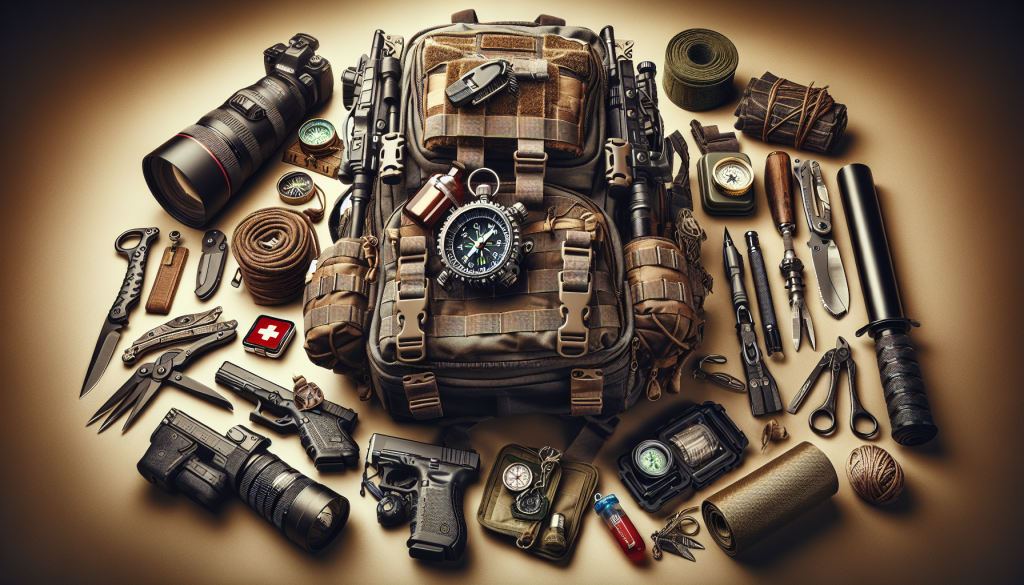
Fire and Lighting
Fire can provide warmth, light, and a way to cook food in a survival situation. That’s why it’s important to pack the necessary items to start and maintain a fire. Pack waterproof matches or a lighter as your primary fire-starting tool. Store them in a waterproof container to ensure they remain functional even in wet conditions. Additionally, bring fire-starting materials such as tinder and kindling to facilitate the process.
Furthermore, having a reliable flashlight or headlamp is essential for navigating in the dark or during low light conditions. Choose a flashlight or headlamp that offers a long battery life and is both durable and waterproof. This will ensure that you have a reliable source of light throughout your trip.
Navigation Tools
Navigating the terrain is crucial to a successful survival trip. Carrying a handheld GPS device can provide accurate location data and help you stay on track. Familiarize yourself with the device before your trip and ensure you have spare batteries or a charging option available.
In addition to a GPS device, include a topographic map and compass in your backpack. These traditional navigation tools are reliable backups in case of technical issues with your GPS device. Make sure you know how to use them effectively to avoid getting lost.
Lastly, packing an emergency whistle is a small but essential item. It can be used to signal for help in case of an emergency or to communicate with your group when you’re separated. This lightweight and compact tool should always be easily accessible, either attached to your backpack or carried on your person.
Survival Gear
Being prepared with the right survival gear is essential for any potential challenges you may encounter during your trip. One vital piece of gear is a reliable knife or multi-tool. Whether it’s for cutting rope, preparing food, or building a shelter, a quality knife or multi-tool is a versatile and essential tool in any survival situation.
Additionally, pack paracord or rope. It can be used for a variety of purposes, such as constructing a shelter, securing gear, or creating makeshift tools. Paracord is lightweight and durable, making it an excellent choice for survival situations.
Lastly, carry a signaling mirror. This compact mirror can be used to reflect sunlight and attract attention from search and rescue teams or other nearby individuals. It’s lightweight and easy to pack, but can be a vital tool in getting rescued during an emergency.
Hygiene and Personal Care
Maintaining proper hygiene and personal care is crucial for your overall well-being during a survival trip. Pack travel-sized toiletries such as toothpaste, toothbrush, and biodegradable soap to stay clean. These small items can make a big difference in your comfort level and morale.
Furthermore, include hand sanitizer and wet wipes in your backpack. These items are essential for maintaining cleanliness when access to water is limited. Hand sanitizer can help kill germs, while wet wipes can be used for sponge baths or cleaning cooking utensils.
A small towel is also worth packing. It can be used for drying off after rain, cleaning utensils, or even as a makeshift bandage in case of an injury. Look for a lightweight and quick-drying towel that won’t take up much space in your backpack.
Communication Devices
Staying connected and being able to communicate with others is essential during a survival trip. Bring a fully charged mobile phone and charger as your primary communication device. While there may not always be cell service in remote areas, having a mobile phone can still be crucial in case of an emergency. Store it in a waterproof bag or case to protect it from moisture.
In addition to a mobile phone, packing a two-way radio or satellite communicator is recommended. These devices can help you stay in touch with your group or call for help when needed. Consider investing in devices with long-lasting batteries and a wide range of communication capabilities.
Lastly, include spare batteries for all your communication devices. Extra batteries ensure that you can continue using your devices even if the initial battery runs out of power. Keep the spare batteries in a separate, waterproof container to prevent them from becoming damaged or wet.
Extra Supplies
Preparing for unforeseen circumstances is essential when planning a survival trip. Packing extra socks and underwear is a wise precaution. These items tend to get wet or dirty quickly, so having spares can keep you comfortable and prevent any potential health issues.
You’ll also want to include a waterproof bag or dry sack in your backpack. This ensures that important items, such as electronics or document, stay dry and protected from water damage. A dry sack can be especially useful if you’re planning on crossing bodies of water or encountering rainy conditions.
Lastly, always bring cash and identification documents with you. While you may not need them for every situation, having them readily available can be crucial in emergencies or unexpected circumstances. Keep them in a waterproof compartment or bag to ensure their safety.
By following these guidelines, you can ensure that your tactical backpack is packed with all the necessary items for a successful and safe 3-day survival trip. Remember to double-check your backpack before setting off and familiarize yourself with the functionality of each item. Stay safe, have fun, and enjoy your adventure in the great outdoors!

